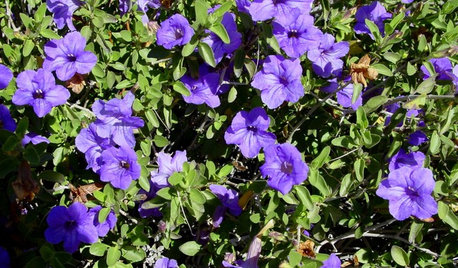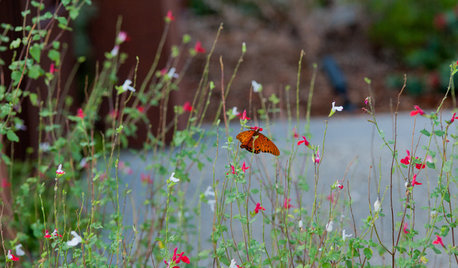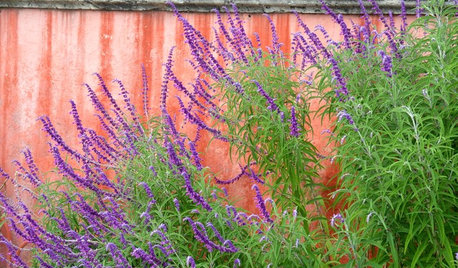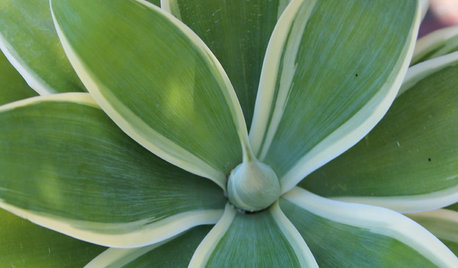Mexican petunia
12 years ago
Related Stories

GRASSES10 Ways to Use Ornamental Grasses in the Landscape
These low-maintenance plants can add beauty, texture and privacy to any size garden
Full Story
GARDENING GUIDESGreat Design Plant: Desert Ruellia Brings Beauty to Dry Gardens
Abundant purple flowers and bright green foliage would make this shrub a winner even without its unthirsty ways
Full Story
GARDENING GUIDESGarden-Friendly Native Alternatives to Overplanted Exotics
There are lots of gorgeous, wildlife-friendly native plants ready to make an appearance in your garden
Full Story
EARTH DAYCreate a Container Wildlife Habitat for Hummingbirds and Butterflies
Don’t let limited space prevent you from welcoming wildlife into your garden
Full Story
GARDENING GUIDESGreat Garden Combo: 3 Wonderful Plants for a Deer-Resistant Screen
Protect your privacy and keep deer at bay with a planting trio that turns a problem garden area into a highlight
Full Story
CONTAINER GARDENSChoose Complementary Colors for Dazzling Container Gardens
Red and green, purple and yellow, and blue and orange are opposing pairs that work in perfect harmony
Full Story
GARDENING GUIDES10 Plants for Colorful Fall Blooms in the Drought-Tolerant Garden
Want fall color but not a big water bill? Consider these not-too-thirsty fall bloomers
Full Story
CALIFORNIA GARDENINGCalifornia Gardener's April Checklist
Outsmart droughts with water-savvy plants and sustainable approaches that suit the landscape
Full Story
COLORRelax and Reflect in a Blue Landscape
Find sanctuary by introducing this well-loved hue outside
Full Story
GARDENING GUIDESTexas Gardener's June Checklist
Win the battle against heat and drought with these plant picks and extra effort, for a garden that reigns supreme in summer
Full Story






rusty_blackhaw
Tiffany, purpleinopp Z8b Opp, AL
Related Discussions
Please...how to take cuttings from Mexican Petunia...
Q
Ruellia brittoniana --Mexican petunia-3to 4 ft. tall
Q
Ruellia/Mexican Petunia
Q
Desperate for Advice - Firepit patio, Mexican Petunias
Q